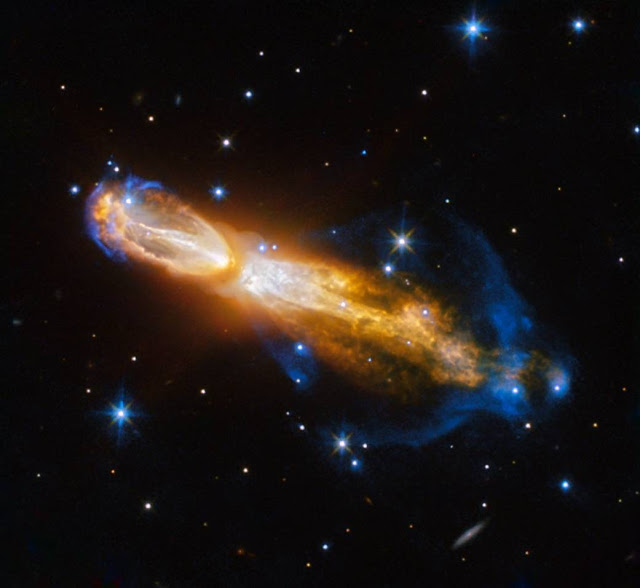

| Online: | |
| Visits: | |
| Stories: |

| Story Views | |
| Now: | |
| Last Hour: | |
| Last 24 Hours: | |
| Total: | |
Hubble Captures Brilliant Star Death in “Rotten Egg” Nebula
The Calabash Nebula, pictured here — which has the technical name OH 231.8+04.2 — is a spectacular example of the death of a low-mass star like the sun. This image taken by the NASA/ESA Hubble Space Telescope shows the star going through a rapid transformation from a red giant to a planetary nebula, during which it blows its outer layers of gas and dust out into the surrounding space. The recently ejected material is spat out in opposite directions with immense speed — the gas shown in yellow is moving close to one million kilometers per hour (621,371 miles per hour).

Image credit: ESA/Hubble & NASA, Acknowledgement: Judy Schmidt
The nebula is also known as the Rotten Egg Nebula because it contains a lot of sulphur, an element that, when combined with other elements, smells like a rotten egg — but luckily, it resides over 5,000 light-years away in the constellation of Puppis.
European Space Agency
Source:




C’mon NASA, Turn the Hubble toward the Earth and show us the round spinning ball. After 80 years in space, we ought to have at least one photo that hasn’t been faked on a computer. Zoom in and do a scan so we can see skyscrapers pointed at all different angles like they would have to be on a ball.
Now why do you suppose we have never seen anything like that?